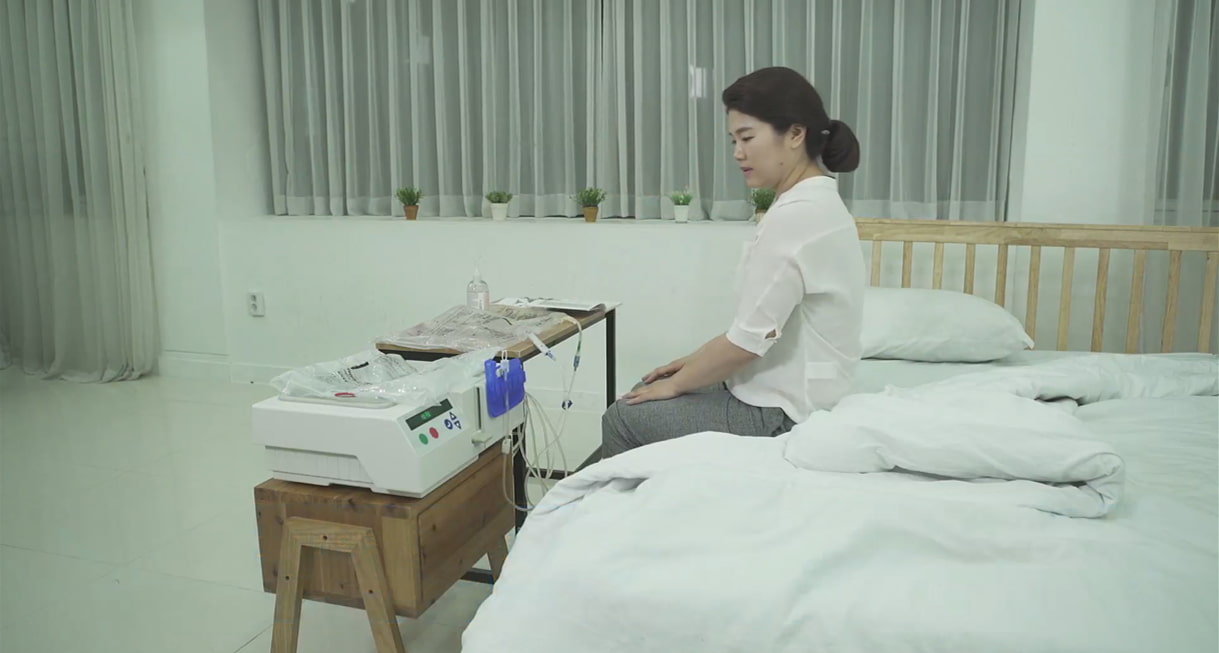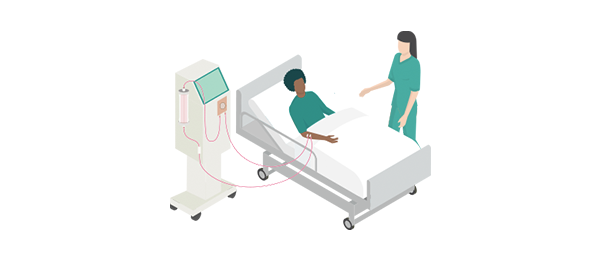Automated peritoneal dialysis (APD)
Automated peritoneal dialysis (APD) is a home therapy option that is performed using a dialysis machine, which helps to deliver and drain the dialysis solution.

What is automated peritoneal dialysis (APD)?
APD is a type of PD that is performed using a dialysis machine, which helps to deliver and drain the dialysis solution automatically. The dialysis machine, also called a cycler, is programmed to provide the exact amount of dialysis prescribed by your clinician. An APD cycle typically takes between 8 and 12 hours and can be performed overnight while you sleep.
How does APD work?
Overnight, your dialysis machine will go through multiple cycles of draining used dialysis solution from your abdomen and filling it with fresh solution, leaving this solution in place for a prescribed time (this is called the dwell time). Once the dwell time has completed, your machine will drain the fluid out.

How to prepare for APD
As a portable dialysis machine will be placed in your home, there are a few requirements and preparations needed. You may contact your dialysis service provider if you require assistance.

How can remote patient monitoring help APD patients?
If your APD cycler has remote patient monitoring capabilities, it can collect accurate information about your home treatments daily and send it to your clinician at the hospital or clinic. Your clinician can monitor your therapy progress, change your machine programs remotely and discuss any problems you are having over the phone.

What is it like to live with APD?
APD treatment usually lasts between 8 and 12 hours, depending on your medical and lifestyle requirements. It is typically done while you sleep, giving you the freedom to carry on your normal activities during the day. APD may make it easier than other dialysis options for you to continue working, studying, or socialising during the day. Additional daytime dialysis exchanges may sometimes be required; your clinician will advise you if this is necessary.
How long can I stay on PD?
Factors such as your age, medical condition, and lifestyle habits may influence how long you stay on PD. There are other options available for you after your PD journey which will be discussed with your doctor.1
Subscribe to My Kidney Journey Newsletter
Sign up now to receive exclusive content on kidney disease, treatment options, lifestyle tips and inspiring patient stories.
Where to go next?

Continuous ambulatory peritoneal dialysis (CAPD)
CAPD can be performed at work, home or during travel.

In-centre haemodialysis (In-centre HD)
You may prefer to receive dialysis at a hospital or treatment centre near you with ICHD.

Kidney transplant
If you and your clinician decide dialysis isn’t right for you, there are other treatment options you may consider.
